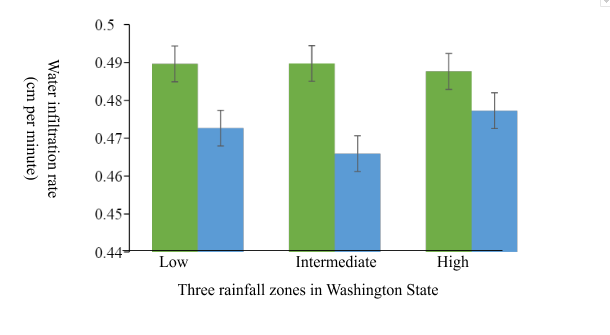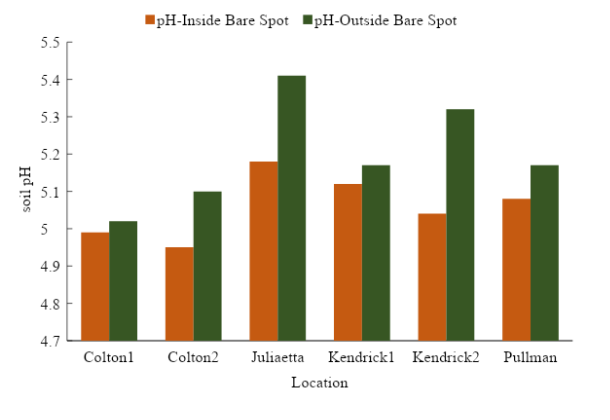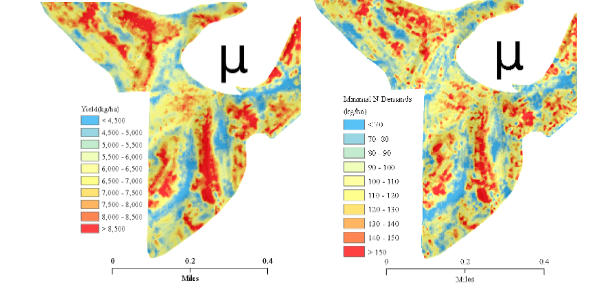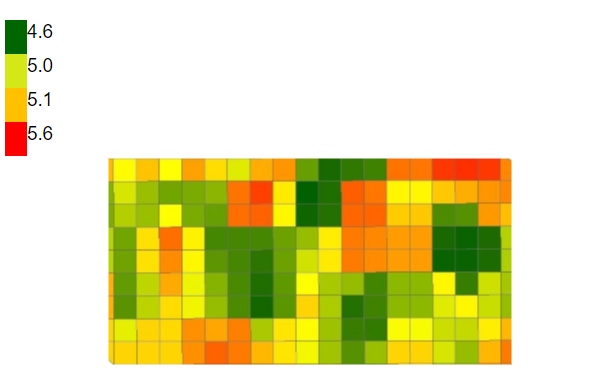As defined by the Natural Resources Conservation Service, soil health is “the continued capacity of soil to function as a vital living ecosystem that sustains plants, animals, and humans.”
The term first appeared in the literature in 1971 and during the past 40 years has gained world-wide attention. In the past six years, interest in soil health among U.S. farmers, scientists, policy-makers, and environmentalists has grown exponentially due to heightened awareness of farmland degradation and conversion to non-farm uses–important issues when it comes to feeding our hungry planet.
In response, actions involving private and public sectors have been undertaken to transfer scientific knowledge and technology to farm fields for soil health improvement. A nation-wide effort, the Soil Renaissance was launched on World Soil Day 2013 as a result of a collaborative effort among the Farm Foundation, the Samuel Roberts Nobel Foundation, and other scientific organizations. This effort led to the formation of the Soil Health Institute (SHI), whose mission is to “safeguard and enhance the vitality and productivity of soil through scientific research and advancement”.
Washington State’s Gov. Jay Inslee has expressed interest in the state’s soil health status and improving the state’s farmland soils. Researchers at Washington State University (WSU) have initiated many projects in response to commodity groups’ interest in improving soil health. A few of WSU’s long-term projects are among the 125 sites across the U.S., Canada, and Mexico selected by the SHI to evaluate soil health.
Eastern Washington soils have been degraded substantially since the beginning of the farming era, but on a year-to-year basis, it may be hard for farmers to make the connection. Questions farmers need to ask themselves include: 1. Why is soil health important on my farm? 2. Aren’t my farming practices good enough to protect my soils? 3. How is soil health evaluated? 4. Should I be doing a soil health assessment?
We understand soil is a medium that supports crop production. But, we don’t often think about soil serving other functions. Soil helps recharge groundwater by allowing rainfall to infiltrate and filter through the soils. Soil degrades plant and animal residue and supports nutrient cycling. Soil provides habitat for an incredible diversity of organisms such as bacteria, algae, fungi, nematodes, earthworms, and insects. Soil also serves as a sink for carbon or as a source for releasing greenhouse gases, important for either mitigating or contributing to wild weather variability.
Soil health is important because healthy soils provide an environment for healthy crops. Healthy soils allow air circulation for optimal nutrient cycling and provide constant and sufficient nutrients throughout the growing season. Healthy soils support root development with the least amount of effort and damage, while allowing roots the greatest potential to reach water and nutrients. Healthy soils also allow efficient rainfall infiltration and water storage while minimizing runoff and nutrient loss.
And that’s not all! Healthy soils support healthy organisms by suppressing plant diseases and parasitic organisms making for healthier plants that can reduce further crop inputs. Improving soil health can boost crop yields and increase crop resilience to many of the uncertainties inherent in farming enterprises.
Soil health indicators measure physical, chemical, and biological characteristics of soils. The SHI recently announced 19 Tier 1 and 12 Tier 2 soil health indicators. Tier 1 soil health indicators are most familiar to farmers, including chemical characteristics (total nitrogen; soil pH; electrical conductivity; soil organic carbon; cation exchange capacity; percent base saturation; extractable P, K, Ca, Mg, and Na; extractable Fe, Zn, Cu, and Mn), physical characteristics (texture; aggregate stability; available water-holding capacity; bulk density; penetration resistance; water infiltration rate; erosion rating), and biological characteristics (short-term carbon mineralization rate; nitrogen mineralization rate; crop yield).
Most Tier 2 soil health indicators focus on measuring biological characteristics relevant for evaluating the abundance and diversity of soil organisms. These organisms, regardless of size, are responsible for numerous soil processes, including: (1) breaking down residues and incorporating humus, (2) maintaining nutrient cycling and balance, (3) building soil aggregates and structure, (4) creating spaces and channels for aeration and water infiltration, and (5) redistributing nutrients within the soil profile. Additional research is required before these indicators can be used with confidence as benchmarks of soil health.
Similar to annual physical exams for people, a soil health assessment provides farmers a comprehensive evaluation of soil health status while diagnosing issues. In the long term, the assessment can provide documentation to monitor changes in soil health and evaluate how management practices have changed each indicator. This assessment allows farmers to make strategic changes to prevent further degradation and improve soil health that in turn, sustains soil and crop health. Specific benefits of a comprehensive soil health assessment include:
- The opportunity to establish a baseline and document changes. Because soils are diverse, establishment of universal and absolute target of critical values is impossible. Therefore, soil health assessments must include a baseline for every field to accurately document changes.
- Benchmarking soil health to soil management practices, natural soil properties and climate which can help identify soil health improvement strategies. Chart 1 shows how tillage practices influence water infiltration rates in three rainfall zones in Washington. These preliminary data indicate that switching from conventional tillage to no-till may improve soil infiltration and this benefit may be most pronounced in the intermediate rainfall zone.
- Linking soil health problems to crop health problems. Chart 2 shows soil pH values of spring soil samples collected from paired inside- and outside-bare spots due to winter kill of winter peas. Results suggest that soil pH might affect crop development in the fall and, therefore, winter survival of winter peas. Variable lime application rates in these fields could be a solution.
- Linking soil health assessment to crop health, aerial imagery (drones provide better resolution) and satellite imagery. Such imagery data can be used to diagnose soil health issues and make site-specific soil, fertility and residue management recommendations. Chart 3 shows the spatial variability of grain yield and total N uptake is highly correlated with the physical characteristics of soils.
- Selecting the appropriate crops and crop rotation. When soil health changes, farmers may need to make changes in crop selection. Farmers may want to include crops with deep tap root systems in rotation when fields have subsoil compaction that restrict rooting depth. Chart 4 shows a field with soil pH<5 in most areas. Continuous soil pH decline will restrict crop options for this field.
The most recent soil health assessment project for eastern WA soils was initiated in 2017. More projects and educational programs are expected to launch in the near future. Farmers who wish to participate in a soil health evaluation, contact Dr. Haiying Tao, Department of Crop and Soil Sciences, Washington State University, [email protected], 509-335-4389.





